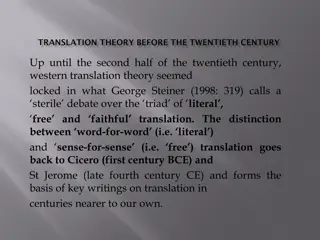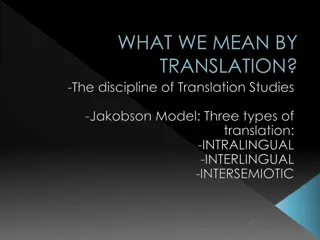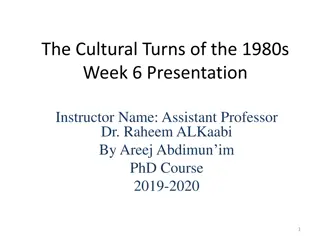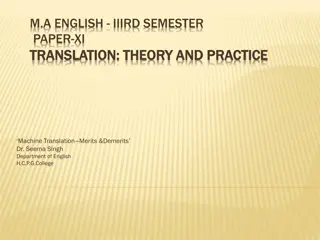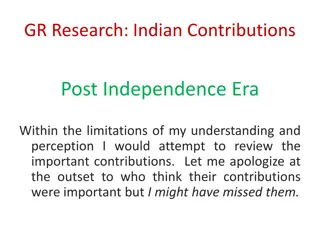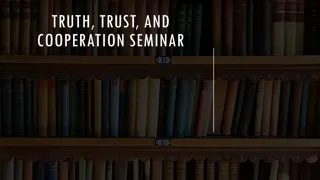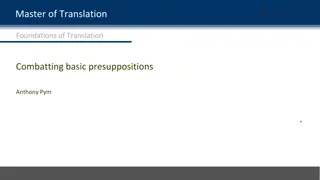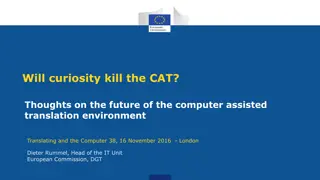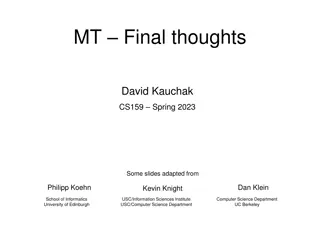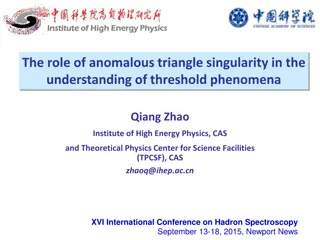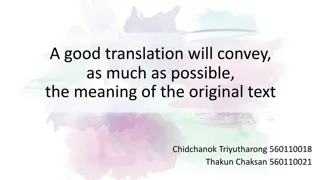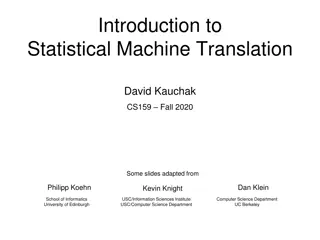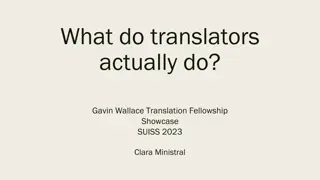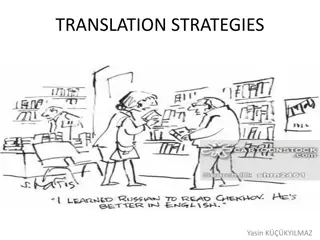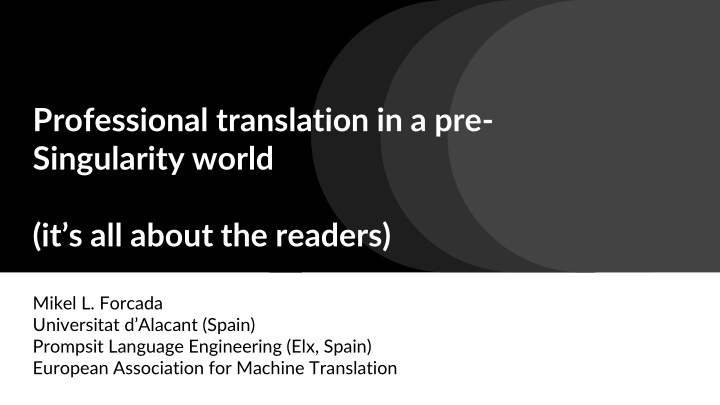
Professional Translation in a Pre-Singularity World: Understanding Readers
Delve into the intricacies of professional translation in a pre-Singularity setting, focusing on understanding readers and their reactions. Explore the role of translators and the evolving landscape of machine translation, catering to both professionals and ordinary users.
Download Presentation

Please find below an Image/Link to download the presentation.
The content on the website is provided AS IS for your information and personal use only. It may not be sold, licensed, or shared on other websites without obtaining consent from the author. If you encounter any issues during the download, it is possible that the publisher has removed the file from their server.
You are allowed to download the files provided on this website for personal or commercial use, subject to the condition that they are used lawfully. All files are the property of their respective owners.
The content on the website is provided AS IS for your information and personal use only. It may not be sold, licensed, or shared on other websites without obtaining consent from the author.
E N D
Presentation Transcript
Professional translation in a pre- Singularity world (it s all about the readers) Mikel L. Forcada Universitat d Alacant (Spain) Prompsit Language Engineering (Elx, Spain) European Association for Machine Translation
Getting the target-language reader to understand the message, and to (re)act as expected the purpose of the translation implies getting in their shoes: All translation is communication expectations beliefs feelings cultural context social context Can a machine get in your shoes without a model of you?
Professional translation Translators are professionals that are good at that, but variably so. They use: approximate, often intuitive models of readers a reasonable understanding of purpose: sometimes explicitly formulated often gleaned / read between the lines / guessed the customer often has only an approximate idea Fulfillment of purpose? often a rudimentary approximation: customers coming back for more
Machine translation Current machine translation does not have explicit access to a model of the reader nor feedback from that model or negotiation with it. It is therefore hard to code purpose (as it includes the reaction of readers). Current approach (neural, statistical MT): producing text that works by mimicking good references (references that presumably worked well in the past).
Readers of machine translation But who reads raw machine translation? Professional translators: most likely to postedit it. Purpose: being easy to postedit into text which fulfils the customer s purpose. Ordinary people: to make sense of a text across a language barrier. Purpose: being easy to understand as is. The requirements of both tasks are different! But ordinary people get used to dealing with noisy, non-native, non- grammatical content. MT ed content is not an exception.
PT already being replaced? Professional translators are already being replaced (no need to wait for a Kurzweilian singularity) in some applications. In fact, they have never been (and will never be) part of some applications (e.g. translated web browsing).
Implicit modelling of readers MT can get better at using rudimentary ways to guess purpose (which means modelling readers implicitly). It may replace PT where intricate reader modelling is not necessary as behaviour can be taken for granted: E.g. translated instructions that will be followed by an obedient reader that has decided or has been instructed to do so. In the future, it may actually negotiate and interact with readers to build an approximate model.
And now, back to the original question So, will all translators be replaced before the Singularity? MT will get much better at implicitly modelling some types of readers / reading situations: PT already gradually being replaced. MT still has a long way to go when modelling some types of readers / reading situations. PT still needed there.




